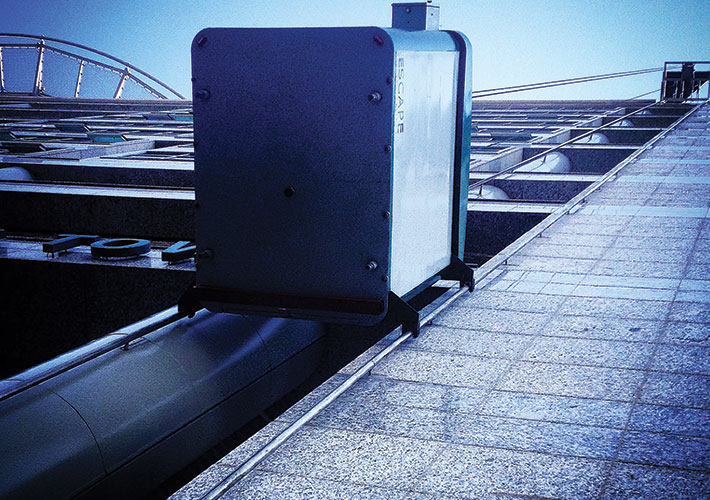
Gaining Market Acceptance
A small business with a big idea gains international traction by sitting at the standards development table. Jonathan Shimshoni describes how his company, Escape Rescue Systems, made the leap from codes and standards to market access.
About 10 years ago, a group of experienced entrepreneurs and professionals set out to revolutionize emergency evacuation and access to high rise buildings. We established Escape Rescue Systems Ltd., and developed an innovative solution - a sort of external elevator that gives responders quick access to a building's interior, enabling them to evacuate occupants of all physical abilities and ages.
After a successful full-scale beta test, we set out to conquer world markets - only to find out that, without standards, there could be no market acceptance. There were no relevant standards anywhere in the world. In addition, the safety philosophy that guides the Escape Rescue solution is in many ways new and even contradictory to the philosophy that guides safety measures for regular-use elevators.
For example, a principle of elevator safety says that, in case of a malfunction, movement is forbidden; movement is, in fact, rendered automatically impossible. But we believe that, in an emergency evacuation scenario in a burning building, the operator must have the ability to override the system's automatic "decision" to stop. In such situations, it must be the operator's call as to whether it is more dangerous to stop and wait or to continue to move.
No recognized specifications existed for such applications when we started out. This was all new territory.
So, the market (potential clients, regulators and authorities having jurisdiction) told us: "What you have is really exciting and innovative and could potentially save lives and property. Come back to us when you conform to a recognized standard."
We understood that we would need to conform to a product specification and a fire or life safety code. We mapped the terrain in terms of professionalism and global acceptability and decided that the two most appropriate organizations for our solution would be the National Fire Protection Association for the code angle and ASTM International for product specification.
ASTM determined that standards for external evacuation equipment should be developed by Committee E06 on Building Performance. Subcommittee E06.77 on High Rise Building External Evacuation Devices was established and worked under a memorandum of understanding with the Standards Institution of Israel.
As this field of activity was new at the time, getting a subcommittee of stakeholders together was not a trivial matter. We pulled together an outstanding group of industry representatives of diverse technologies and solutions as well as fire, safety and mechanical engineers.
The Standards Institution of Israel agreed to participate, an excellent move as they had more experience in this area than any other standards body we could identify. Ultimately, I became chairman of the subcommittee and this enabled me to help keep the process on course (while working at a relatively high metabolic rate).
In 2007, the subcommittee approved standard E2513, Specification for Multi-Story Building External Evacuation Platform Rescue Systems. (At the same time, a standard for another technology - E2484, Specification for Multi-Story Building External Evacuation Controlled Descent Devices - was also approved by the same subcommittee). Two years later, NFPA defined and incorporated such solutions in an annex to NFPA 101: Life Safety Code and made them permissible on condition that they meet the new ASTM standard or its equivalent.
The ASTM standard has turned the market around for our company and anyone trying to advance external evacuation. We have enjoyed critical benefits:
Market entry - Given the worldwide acceptance of ASTM standards, the door opened for discussions with potential clients, as well as with labs and regulators who now feel that they are on firm ground when considering the testing and approval of such equipment, even when certain (minor) modifications must be made for local conditions.
Development - The standard provides excellent and clear design guidelines as we develop improvements and a new generation of solutions.
Manufacturing - Our company uses several major subcontractors to manufacture our equipment. Holding them to the ASTM standard creates clear requirements and testing and provides a straightforward, common language.
So where are we now? Escape Rescue has just completed the installation and commissioning of its first fully operational system at a major medical center in Tel Aviv. The system was tested by the Standards Institution of Israel and found to be in conformance with E2513. Consequently, we have begun our second installation at the medical center. In parallel, we are now in advanced negotiations in both India and South Korea - discussions enabled in part by the local conviction that the ASTM standard (boosted by the NFPA acceptability) provides a good foundation for confidence.
Jonathan (Yoni) Shimshoni, Ph.D., CEO of Escape Rescue Systems, Tel Aviv, Israel, leads Subcommittee E06.77 on High Rise Building External Evacuation Devices.
Tel Aviv, Israel
Developer and manufacturer of high rise emergency evacuation systems
Trading area: Global
Number of staff: 8
 SN Home
SN Home Archive
Archive Advertisers
Advertisers Masthead
Masthead RateCard
RateCard Subscribe
Subscribe Email Editor
Email Editor